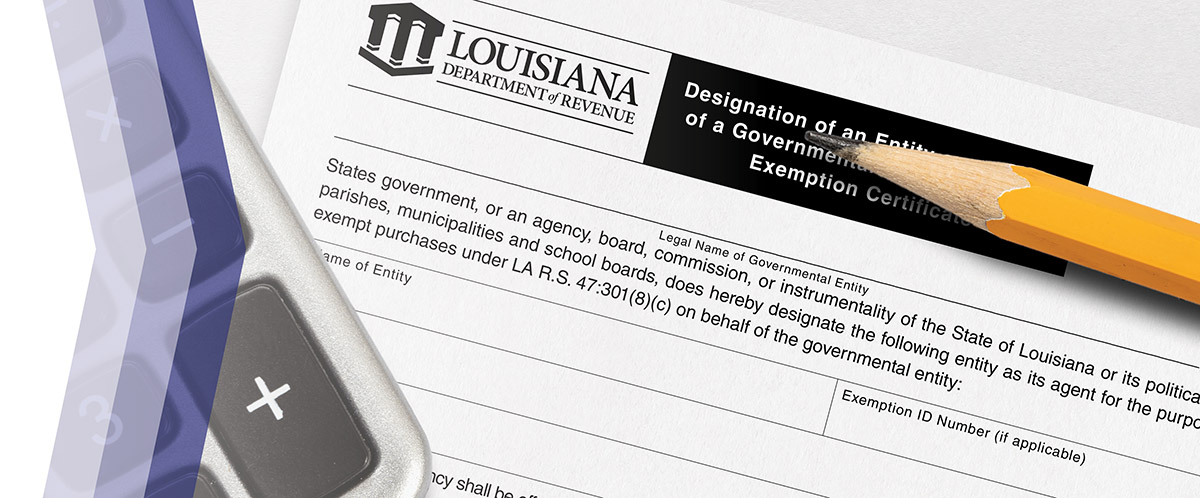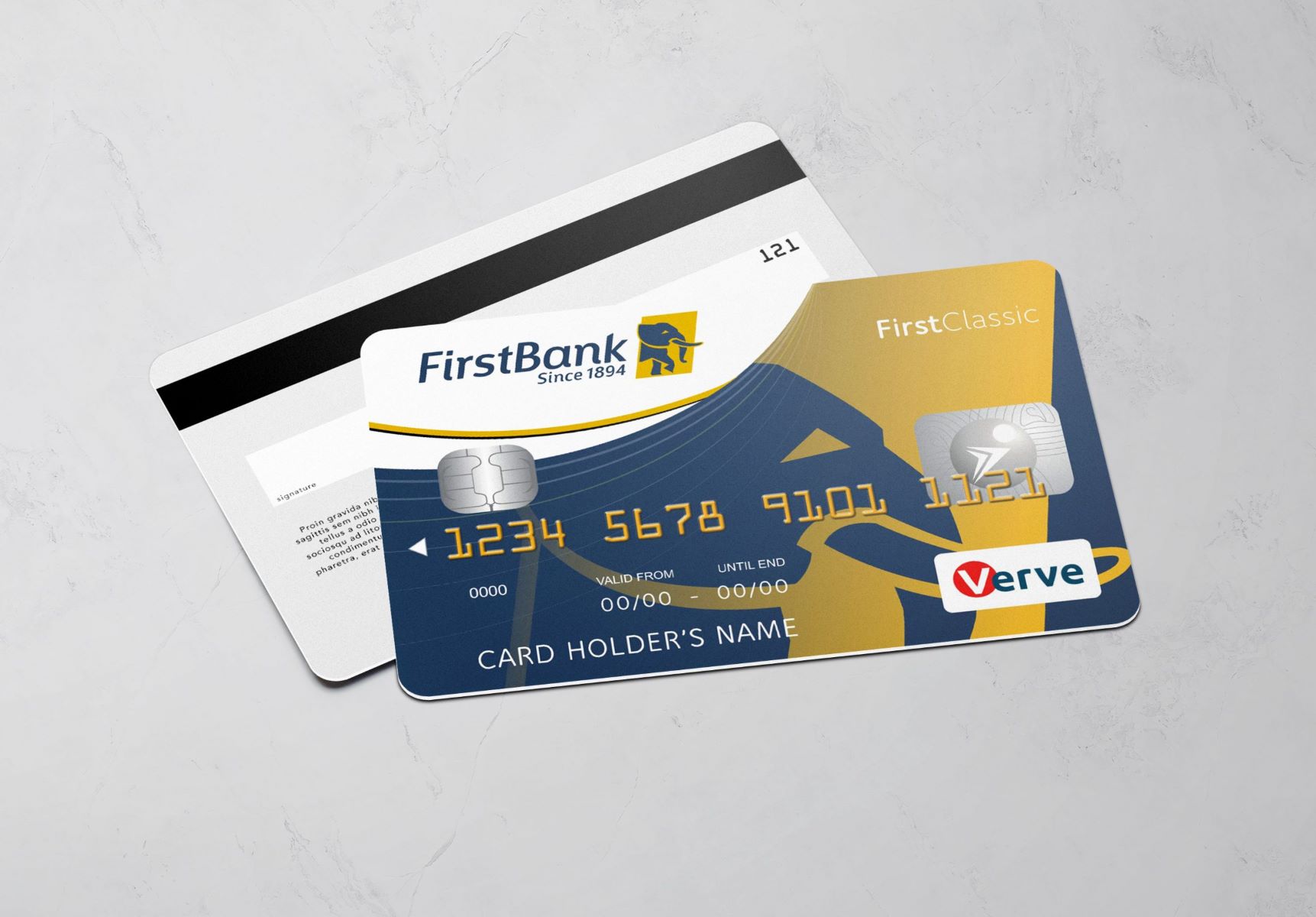

Finance
Where To File A Federal Income Tax Return 2018
Modified: February 21, 2024
File your federal income tax return for 2018 and get expert advice on finance at [Website Name]. Discover where to file and maximize your deductions to save money.
(Many of the links in this article redirect to a specific reviewed product. Your purchase of these products through affiliate links helps to generate commission for LiveWell, at no extra cost. Learn more)
Table of Contents
- Introduction
- Requirements for Filing a Federal Income Tax Return
- Choosing the Correct Filing Status
- Determining your Filing Deadline
- Options for Filing a Federal Income Tax Return
- Filing a Federal Income Tax Return by Mail
- Filing a Federal Income Tax Return Online
- Using IRS Free File to Prepare and File your Taxes
- Filing a Federal Income Tax Return with a Tax Professional
- Filing a Federal Income Tax Return with Commercial Tax Software
- Where to Mail a Federal Income Tax Return
- Concluding Remarks
Introduction
Filing a federal income tax return is an essential responsibility for individuals and businesses in the United States. It provides the necessary information about your income, deductions, and tax liability to the Internal Revenue Service (IRS). However, with numerous options available for filing, it can be overwhelming to determine the best approach.
In this article, we will explore the various options for filing a federal income tax return and provide guidance on choosing the right method for your unique situation. Whether you prefer a traditional paper filing or the convenience of electronic filing, understanding the requirements and procedures will help ensure a smooth and accurate filing process.
Before we delve into the different filing options, it’s important to note that certain requirements must be met to file a federal income tax return. Individuals with a certain level of income, dependents, and specific tax situations are obligated to file. It’s crucial to review the IRS guidelines and consult with a tax professional to determine your filing requirements.
Additionally, it’s essential to understand which filing status applies to your situation. Your filing status determines your tax bracket, eligibility for certain deductions and credits, and other factors that can impact your tax liability. The IRS provides five options for filing status: single, married filing jointly, married filing separately, head of household, and qualifying widow(er) with dependent child. Each status has its own eligibility criteria, and choosing the right one is crucial for accurate tax filing.
Another vital aspect of filing your federal income tax return is determining your filing deadline. For most individuals, the deadline falls on April 15th of each year. However, in certain situations, such as weekends or holidays, the deadline may be extended. It’s crucial to stay updated with any changes to the filing deadline to avoid penalties or interest charges.
Now that we have covered the basics, let’s delve into the different options for filing a federal income tax return. Whether you prefer the traditional approach of filing by mail or opt for the convenience of online filing, understanding the procedures and requirements will help you make an informed decision.
Requirements for Filing a Federal Income Tax Return
Before diving into the various options for filing your federal income tax return, it’s important to understand the requirements that determine whether you need to file in the first place. The IRS has specific rules regarding income thresholds, filing statuses, and certain tax situations. Here are the key factors to consider:
- Income: The amount and type of income you earn play a significant role in determining whether you need to file a federal income tax return. Generally, if your income exceeds a certain threshold, you are required to file. The income thresholds vary depending on your filing status and age.
- Filing Status: Your filing status is another important factor in determining your filing requirements. As mentioned earlier, there are five filing statuses: single, married filing jointly, married filing separately, head of household, and qualifying widow(er) with dependent child. Each status has its own income thresholds and eligibility criteria for filing.
- Dependents: If you have dependents, there are additional considerations. For example, if you have a dependent who earns income, they may still need to file separately. Additionally, claiming certain tax credits, such as the Child Tax Credit or the Earned Income Tax Credit, may also require you to file a federal income tax return.
- Special Situations: Certain tax situations may also require you to file even if your income falls below the threshold. For instance, if you had self-employment income of $400 or more, you are required to file a tax return and report the income. It’s essential to review the IRS guidelines or consult with a tax professional to determine if any special situations apply to you.
It’s important to note that even if you are not required to file a federal income tax return, there may be benefits to filing voluntarily. You may be eligible for tax credits or refunds, and filing can also establish a record of your income and tax obligations. It’s always wise to consult with a tax professional to determine the best course of action based on your specific circumstances.
Once you have determined that you are required or choose to file a federal income tax return, the next step is selecting the appropriate filing status. In the next section, we will explore the different filing statuses and their eligibility criteria.
Choosing the Correct Filing Status
When filing your federal income tax return, selecting the correct filing status is crucial. Your filing status determines your tax bracket, eligibility for certain deductions and credits, and other factors that can impact your tax liability. The Internal Revenue Service (IRS) provides five options for filing status:
- Single: This status applies if you are unmarried, divorced, or legally separated according to your state’s laws. If you are a single parent with dependents, you may qualify for the Head of Household status, which offers more favorable tax rates and a higher standard deduction.
- Married Filing Jointly: If you are legally married and both you and your spouse agree to file a joint tax return, you can choose the Married Filing Jointly status. This filing status is advantageous for most married couples, as it offers lower tax rates and a larger standard deduction compared to other filing statuses.
- Married Filing Separately: Married individuals who want to keep their tax affairs separate may opt for the Married Filing Separately status. While this filing status can provide certain benefits in special circumstances, such as when one spouse wants to be responsible for their own tax liability, it often results in higher tax rates and limitations on certain deductions and credits.
- Head of Household: If you are unmarried, have paid for more than half the cost of maintaining a home for yourself and a qualifying dependent, and meet other specific criteria, you may qualify for the Head of Household status. This status offers lower tax rates and a larger standard deduction compared to the single filing status.
- Qualifying Widow(er) with Dependent Child: If your spouse passed away within the last two years, you can use the Qualifying Widow(er) with Dependent Child status for that time period. This status allows you to file a joint return and take advantage of the benefits offered to married individuals filing jointly.
Choosing the correct filing status is important for accurate tax filing and ensuring that you receive the maximum benefits and deductions. If you are unsure about which filing status applies to your situation, it’s recommended to consult with a tax professional or utilize the IRS’s interactive tool, the Interactive Tax Assistant, which can help determine your filing status based on your specific circumstances.
Now that we have covered the requirements for filing a federal income tax return and the options for choosing the correct filing status, let’s move on to exploring the different filing options available to taxpayers.
Determining your Filing Deadline
Knowing your filing deadline is crucial to ensure timely submission of your federal income tax return. The filing deadline for most individuals falls on April 15th of each year. However, there are certain situations that can extend or alter the deadline.
If the filing deadline falls on a weekend or holiday, the deadline is typically extended to the next business day. For example, if April 15th falls on a Saturday, the filing deadline would be moved to the following Monday. It’s important to stay updated with any changes to the filing deadline to avoid penalties or interest charges.
Additionally, there are some specific situations that can provide taxpayers with an extended filing deadline. Let’s explore a few common scenarios:
- Extensions: If you need additional time to gather the necessary information or complete your tax return, you can file for an extension with the IRS. This will grant you an additional six months to file your federal income tax return. However, it’s important to note that an extension to file does not extend the deadline for payment. If you owe taxes, you are still required to pay the estimated amount by the original filing deadline to avoid penalties and interest charges.
- Military Service: If you are in the military or serving in a combat zone, you may be eligible for an extension of time to file your federal income tax return. The length of the extension will depend on your specific circumstances. It’s essential to consult with the IRS or a tax professional to determine the applicable deadline.
- Natural Disasters: In the event of a natural disaster or other federally declared disaster, the IRS may provide relief by extending the filing deadline for affected taxpayers. This allows individuals and businesses sufficient time to recover from the disaster and address their tax obligations.
It’s important to remember that while extensions and special deadlines exist, it is always advisable to file your federal income tax return as soon as possible. This will help prevent any potential issues and ensure that you receive any tax refunds you may be entitled to in a timely manner.
In summary, understanding your specific filing deadline is crucial to avoid penalties and interest charges. Be aware of any extensions or special deadlines that may apply to your situation, and if you are unsure about your filing deadline, consult the IRS website or speak with a tax professional.
Options for Filing a Federal Income Tax Return
When it comes to filing a federal income tax return, taxpayers have several options to choose from. The Internal Revenue Service (IRS) provides multiple methods to submit your tax return, allowing you to select the one that best suits your needs and preferences. Let’s explore the different options:
- Filing a Federal Income Tax Return by Mail: This traditional method involves completing a paper tax return and mailing it to the appropriate IRS processing center. While this option requires manual preparation and mailing, it can be suitable for individuals who prefer tangible documents or have complex tax situations that are better handled on paper.
- Filing a Federal Income Tax Return Online: With the advancement of technology, online filing has become increasingly popular. Taxpayers can use commercial tax software or IRS Free File to prepare and submit their federal income tax return electronically. Online filing offers several advantages, including convenience, faster processing times, and the ability to file from the comfort of your own home.
- Using IRS Free File to Prepare and File your Taxes: The IRS Free File program provides eligible taxpayers with access to free tax preparation and filing software. This option is available to individuals with a certain income level, offering a cost-effective solution for those who want to file their federal income tax return online without incurring any fees.
- Filing a Federal Income Tax Return with a Tax Professional: Some individuals may prefer to seek the assistance of a tax professional, such as a certified public accountant (CPA) or tax preparer, to handle their tax return. This option can be beneficial for individuals with complex tax situations or those who want the expertise and guidance of a professional throughout the filing process.
- Filing a Federal Income Tax Return with Commercial Tax Software: Commercial tax software programs, such as TurboTax or H&R Block, provide individuals with user-friendly interfaces and step-by-step guidance to prepare and file their federal income tax return electronically. These software options often include advanced features, such as error-checking and audit support, to ensure accurate filing.
When choosing the best option for filing your federal income tax return, consider factors such as your comfort level with technology, the complexity of your tax situation, your budget, and overall convenience. Some individuals may find the convenience of online filing to be the most suitable option, while others may prefer the personalized assistance of a tax professional.
It’s important to note that regardless of the method you choose, ensure that your tax return is accurate and complete, with all necessary documentation attached. Review your return for any errors or discrepancies before submitting it to the IRS.
In the next sections, we will dive deeper into each filing option to provide a more detailed understanding of the process and the advantages it offers.
Filing a Federal Income Tax Return by Mail
Filing a federal income tax return by mail is the traditional method that involves completing a paper tax return and sending it to the appropriate Internal Revenue Service (IRS) processing center via mail. While it may not be as popular as online filing, it can still be a viable option for certain individuals and situations.
Here are the steps to file a federal income tax return by mail:
- Gather the necessary forms and documents: Before you begin preparing your tax return, ensure that you have all the required forms, such as Form 1040, along with any supporting documents, such as W-2s, 1099s, and receipts for deductions or credits.
- Complete the tax return: Carefully fill out the tax return form, following the instructions provided. Make sure to enter accurate information and double-check for any errors or omissions.
- Copy and attach supporting documents: Make copies of all supporting documents and attach them to your tax return. This includes documents like W-2s, 1099s, and any additional forms or schedules that substantiate your income, deductions, or credits. It’s essential to keep a copy of the completed tax return and all attached documents for your records.
- Check for signatures: Ensure that the tax return is signed and dated by the taxpayer(s) filing the return. If you are filing a joint return, both spouses must sign the form.
- Envelope and mailing: Place your completed tax return and attached documents in an envelope. Check the IRS website or the specific form instructions to find the correct mailing address for your tax return. It’s important to use the appropriate mailing address to ensure timely processing.
- Send the tax return: Once you have secured the envelope, affix the correct postage and mail it to the designated IRS processing center. It’s recommended to send the tax return using certified mail or a delivery service that provides proof of delivery.
One of the advantages of filing a federal income tax return by mail is that you have a tangible record of your tax return. Some individuals may prefer having a physical copy and maintaining a paper trail for their tax-related documents. Additionally, paper filing can be a suitable option for individuals with complex tax situations that may require additional documentation and explanations.
It’s important to note that filing a federal income tax return by mail may result in a longer processing time compared to electronic filing. If you choose this method, make sure to mail your tax return well before the filing deadline to allow ample time for processing and avoid any potential delays.
In the next section, we will explore the option of filing a federal income tax return online, which offers convenience and faster processing times.
Filing a Federal Income Tax Return Online
Filing a federal income tax return online has become increasingly popular due to its convenience and efficiency. The Internal Revenue Service (IRS) provides various options for taxpayers to electronically file their tax returns, making the process quicker and more streamlined.
Here are the key steps to file a federal income tax return online:
- Select an online filing method: There are several options available for filing your federal income tax return online. You can use commercial tax software, IRS Free File, or utilize the services of a tax professional who offers online filing.
- Gather the necessary information: Before you start the online filing process, ensure that you have all the relevant documents and information readily available. This includes your Social Security number, income statements (W-2s, 1099s), deduction information, and any records of credits or payments.
- Follow the prompts and enter your information: The online filing software will guide you through the process, prompting you to enter your personal details, income information, deductions, and credits. Make sure to enter accurate data and double-check for any errors along the way.
- Review and finalize your tax return: Once you have entered all the necessary information, carefully review your tax return to ensure its accuracy. Check for any deductions or credits that you may be eligible for and verify that all fields are properly filled out.
- E-sign your tax return: Most online filing methods will require you to electronically sign your tax return before submitting it. This serves as your official signature and affirms the accuracy of the information you have provided.
- Submit your tax return: After you have reviewed and e-signed your tax return, you can submit it electronically to the IRS. The online filing software will provide instructions on how to securely transmit your return to the appropriate IRS processing center.
Filing your federal income tax return online offers several advantages. It allows for faster processing times, immediate confirmation of receipt from the IRS, and reduces the risk of errors that can occur when manually preparing a paper return. Additionally, online filing software often includes built-in error checks and calculations to help eliminate mistakes and ensure accurate filing.
One of the popular options for online filing is the IRS Free File program, which provides eligible taxpayers with access to free tax preparation and filing software. This program is available to individuals with a certain income level, offering a cost-effective solution for those who want to file their federal income tax return online without incurring any fees.
Before choosing an online filing method, consider factors such as ease of use, cost (if applicable), and any specific features or assistance provided by the software. It’s also important to ensure that the online filing method you select is compatible with your specific tax situation.
In the next sections, we will explore other options for filing a federal income tax return, including using a tax professional or commercial tax software.
Using IRS Free File to Prepare and File your Taxes
For eligible taxpayers, the IRS Free File program offers a convenient and cost-effective way to prepare and file your federal income tax return online. This program is a partnership between the Internal Revenue Service (IRS) and various commercial tax software companies, providing eligible individuals with access to free tax preparation and filing software.
Here’s how you can use IRS Free File to prepare and file your taxes:
- Determine your eligibility: The IRS Free File program is available to taxpayers with adjusted gross incomes of $72,000 or less in 2020. However, income limitations may vary each year, so it’s important to check the current year’s eligibility requirements.
- Choose a participating software provider: Visit the IRS Free File website to browse the list of participating software providers. Each company has its own set of offerings and features, so take the time to compare and select the one that best suits your needs.
- Access the software through the IRS website: Follow the link provided on the IRS Free File website to access the chosen software provider’s website. The software is available online, eliminating the need to download or install any programs on your computer.
- Prepare your tax return: The IRS Free File software will guide you through the process of entering your personal and financial information. It provides step-by-step instructions, ensuring that you complete all necessary forms accurately and efficiently.
- Check for eligible deductions and credits: The software will help you identify any deductions or credits that you may be eligible for, maximizing your potential refund or reducing your tax liability.
- Electronically sign and file your tax return: Once you have reviewed your tax return and ensured its accuracy, electronically sign the return using the IRS Free File software. The software will then submit your return directly to the IRS.
Using IRS Free File to prepare and file your taxes offers several advantages. Firstly, it’s free for eligible taxpayers, providing access to professional-grade software without any additional costs. Secondly, the software is designed to be user-friendly, making it easy for individuals to navigate through the tax preparation process. Additionally, the software performs automatic calculations and error checks, reducing the chance of mistakes on your tax return.
It’s important to note that although the software is free, additional services such as state tax return preparation may incur charges. Review the offerings of the software provider to determine any potential fees for state tax filing or other optional services.
Using IRS Free File is a great option for eligible individuals who want to file their federal income tax return online without incurring any fees. It provides a convenient and reliable method for tax preparation and e-filing, ensuring a smooth and accurate filing process.
In the next sections, we will explore other options for filing your federal income tax return, including using a tax professional or commercial tax software.
Filing a Federal Income Tax Return with a Tax Professional
Filing a federal income tax return with the assistance of a tax professional can be a wise choice for individuals with complex tax situations or those who prefer the expertise and guidance of a professional throughout the filing process. Certified public accountants (CPAs), enrolled agents, and tax preparers are trained professionals who understand the intricacies of the tax code and can help ensure accurate and efficient filing.
Here’s how you can file your federal income tax return with a tax professional:
- Select a qualified tax professional: Look for a certified public accountant (CPA), enrolled agent (EA), or tax preparer who has the necessary qualifications and experience to handle your tax return. Recommendations from friends, family, or colleagues can be a good starting point, but it’s important to do your own research and ensure the professional is reputable and knowledgeable.
- Gather your tax documents: Collect all the necessary tax documents, including W-2s, 1099s, and any supporting documentation for deductions or credits you plan to claim. Organize these documents before your appointment with the tax professional.
- Schedule a consultation: Contact the tax professional to schedule a consultation or appointment. During this initial meeting, they will assess your tax situation, review your documents, and provide an estimate of their fees for preparing your tax return.
- Provide necessary information: Share all relevant information with your tax professional, including details about your income, deductions, and any other tax-related matters. Be open and transparent to ensure accurate and optimal filing.
- Review and approve your tax return: Once your tax professional has prepared your federal income tax return, they will provide a copy for your review. Carefully review the return, ask questions, and clarify any concerns before giving your approval to file.
Working with a tax professional offers numerous benefits. These professionals stay up-to-date with ever-changing tax laws and regulations, allowing them to apply the latest tax strategies and identify all eligible deductions and credits to minimize your tax liability or maximize your refund. They can also provide guidance on complex tax situations, such as self-employment income, rental properties, or investment portfolios.
However, it’s important to note that using a tax professional can come with a cost. The fees for their services can vary depending on the complexity of your tax situation and the geographical location. It’s advisable to discuss the fees upfront and ensure that you are comfortable with the arrangement before proceeding.
Filing your federal income tax return with a tax professional can provide peace of mind and save you time and effort. Their expertise and thorough understanding of the tax code can help ensure accurate filing and potentially optimize your tax outcome.
In the next sections, we will explore other options for filing your federal income tax return, including using commercial tax software.
Filing a Federal Income Tax Return with Commercial Tax Software
Commercial tax software has gained popularity as a convenient and user-friendly option for filing a federal income tax return. These software programs, such as TurboTax or H&R Block, provide individuals with step-by-step guidance and automated calculations to simplify the tax preparation process.
Here’s how you can file your federal income tax return with commercial tax software:
- Select a commercial tax software: Research and select a reputable commercial tax software that aligns with your tax needs and preferences. There are various software options available in the market, each offering different features, pricing plans, and levels of support.
- Install or access the software: Depending on the software you choose, you may need to install it on your computer or access it online via a web browser. Follow the instructions provided by the software provider to get started.
- Enter your personal information: The software will prompt you to enter your personal details, such as your name, Social Security number, and address. Ensure that you provide accurate information to avoid any issues with your tax return.
- Import or enter your income information: Most commercial tax software allows you to import your income information directly from your employer-provided forms (e.g., W-2) or other sources like investment accounts or freelance work. Alternatively, you can manually enter the income details into the software.
- Answer questions and provide deductions: The software will guide you through a series of questions to determine your eligibility for various deductions and credits. Based on your responses, the software will help you claim all applicable deductions and credits to optimize your tax outcome.
- Review and finalize your tax return: Once you have entered all the necessary information, the software will provide a summary of your tax return for review. Take the time to carefully review each section, ensuring accuracy and completeness.
- E-sign and file your tax return: Once you are satisfied with your tax return, electronically sign it using the software’s designated e-signature process. The software will then transmit your return securely to the Internal Revenue Service (IRS) for processing.
Filing a federal income tax return with commercial tax software offers several advantages. These software programs are designed to simplify the tax preparation process, making it easier for individuals to navigate complex tax rules and calculations. They provide real-time error checking, ensuring accuracy and reducing the chances of mistakes on your tax return.
Commercial tax software also offers various levels of support, including access to customer service representatives, online forums, and frequently asked questions (FAQs) sections, to assist you during the filing process. Furthermore, these software options often provide helpful resources and tax planning tools for individuals interested in optimizing their tax situation for future years.
It’s important to note that commercial tax software may offer different pricing plans depending on the complexity of your tax situation and the level of support you require. Before selecting a software, compare the features, pricing, and reviews to ensure it meets your specific needs.
Filing your federal income tax return with commercial tax software is a popular and efficient option for individuals who want to take control of their tax preparation process. The user-friendly interface, automated calculations, and comprehensive guidance make it a popular choice for many taxpayers.
In the next section, we will explore the mailing address where you can send your federal income tax return if you choose to file by mail.
Where to Mail a Federal Income Tax Return
If you choose to file your federal income tax return by mail, it’s crucial to ensure that you send it to the correct mailing address for prompt processing. The specific mailing address where you should send your tax return depends on your location and the type of form you are filing.
For individuals residing within the United States, the mailing address differs based on the filing status and whether a payment accompanies the return. Here are the general guidelines for mailing your federal income tax return:
- Without a Payment: If you are filing a federal income tax return without a payment, the mailing address will vary depending on your state of residence. The IRS has designated specific addresses for each state, which you can find on the IRS website or in the instructions accompanying your tax form.
- With a Payment: If you need to include a payment along with your federal income tax return, you will use a different mailing address. The address to use depends on your state of residence and the type of payment you are making. You can find the appropriate address in the instructions provided with your tax form or on the IRS website.
It is important to note that the mailing addresses may change from year to year, so always check the most recent IRS guidelines to ensure that you have the correct address for your specific tax year.
For individuals residing outside the United States, the process is slightly different. International filers, including those with an APO or FPO address, generally send their federal income tax returns to a designated IRS address in Austin, Texas. However, there may be specific guidelines and exceptions for certain international locations, so it’s advisable to consult the IRS website or seek professional guidance to determine the correct mailing address.
When mailing your federal income tax return, it’s recommended to use certified mail or a reputable courier service that provides tracking and proof of delivery. This ensures that you have a record of your return being sent and received by the IRS.
Remember, mailing your tax return requires sufficient time for processing and delivery. It’s crucial to mail your return well before the filing deadline to avoid any potential issues or penalties arising from late filing.
In summary, determining the correct mailing address is essential when filing your federal income tax return by mail. Be sure to review the instructions provided with your tax form or the IRS website to find the appropriate address for your filing status, location, and payment situation.
Concluding Remarks
Filing a federal income tax return is a responsibility that individuals and businesses must fulfill. Understanding the requirements, choosing the correct filing status, and determining your filing deadline are essential steps in ensuring a smooth and accurate filing process. Luckily, there are multiple options available to taxpayers when it comes to filing their tax returns.
Whether you choose to file by mail or utilize online filing methods, it’s important to select the option that aligns with your preferences, tax situation, and level of comfort with technology. Filing by mail offers a tangible record and may be suitable for those with complex tax situations. On the other hand, online filing provides convenience, faster processing times, and can help reduce the chances of errors with built-in validation checks.
If you meet the eligibility criteria, the IRS Free File program is a great option for preparing and filing your taxes online. It offers free access to tax preparation software, eliminating the need to pay for commercial software packages. Additionally, using a tax professional or commercial tax software can provide expertise and efficiency to ensure accurate and optimized tax filing.
When filing your federal income tax return, remember the importance of providing accurate information, reviewing your return for errors, and signing it before submission. Keep in mind that any necessary payments must accompany your return or be made by the required deadline to avoid penalties or interest charges.
Lastly, double-check the correct mailing address for your tax return if you choose to file by mail. The IRS provides specific addresses based on your location and payment requirements, so be sure to refer to the appropriate guidelines and update your address information as necessary.
By understanding the various options and following the necessary steps, you can navigate the process of filing a federal income tax return with confidence and ensure compliance with tax regulations. Consider your specific needs and preferences, gather the required documentation, and choose the method that suits you best. If you are unsure about your tax situation or have complex circumstances, consulting with a tax professional can provide valuable guidance and ensure accurate filing.
Remember, tax filing does not need to be a daunting task. By staying informed and utilizing the available resources, you can successfully fulfill your tax obligations and achieve peace of mind.














